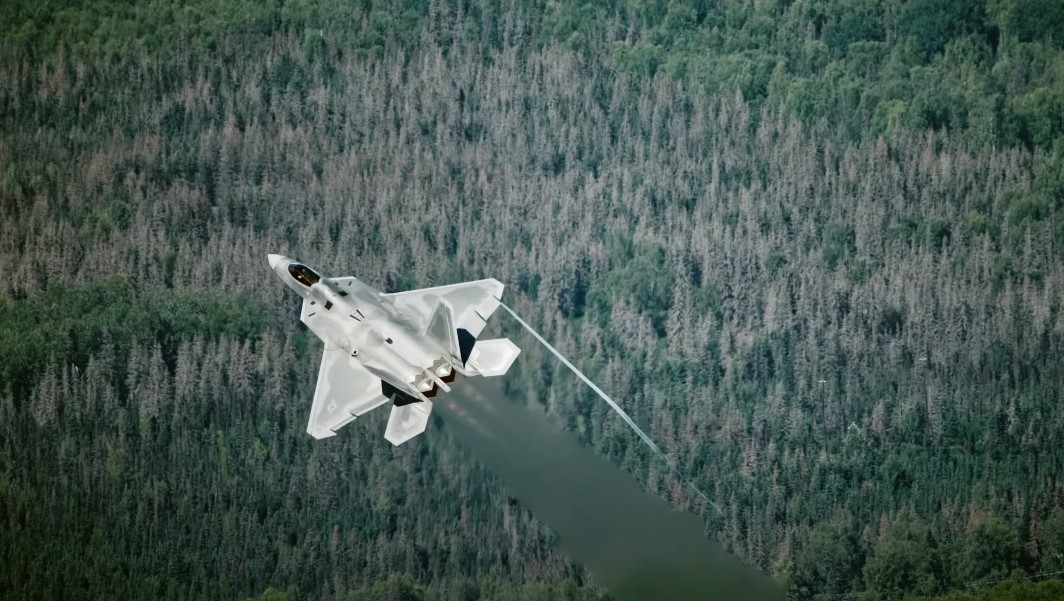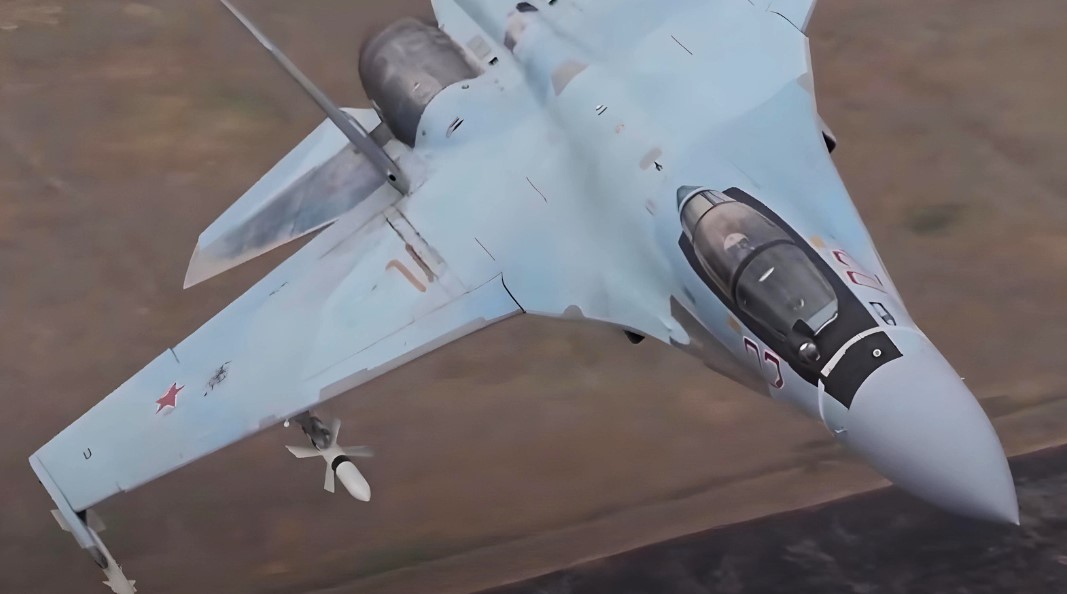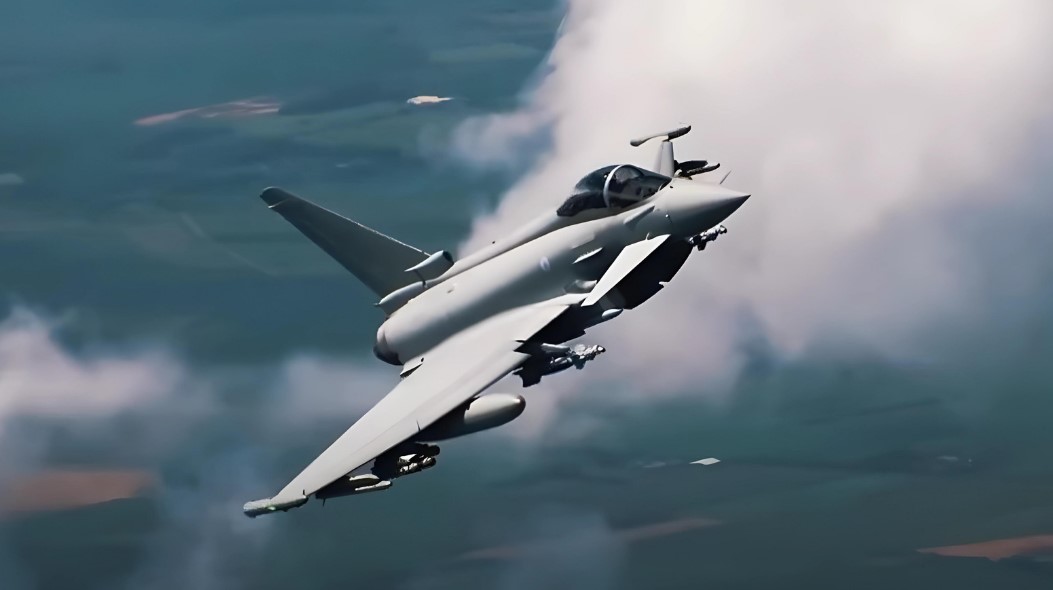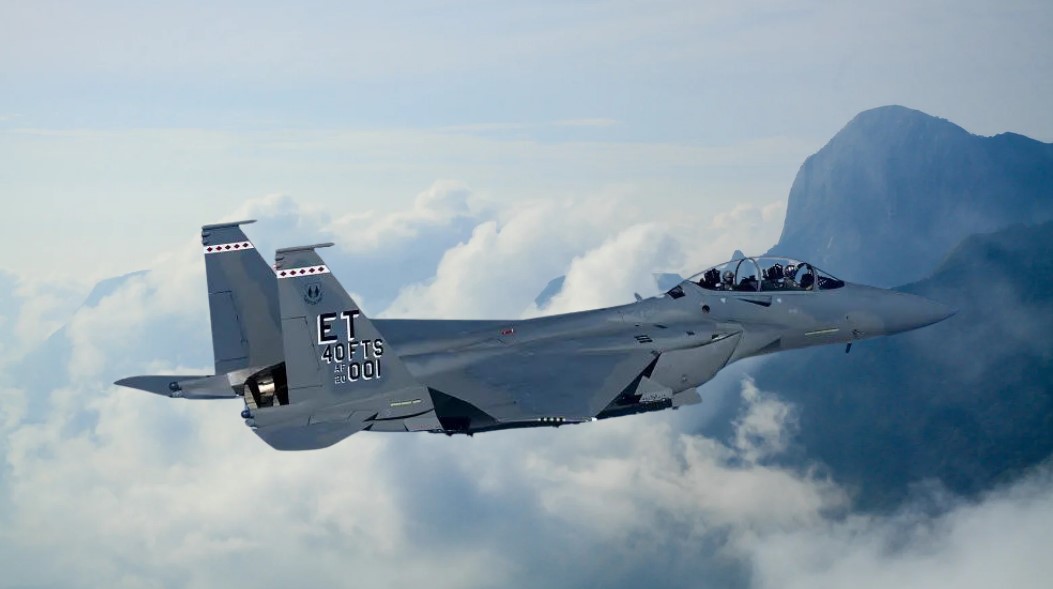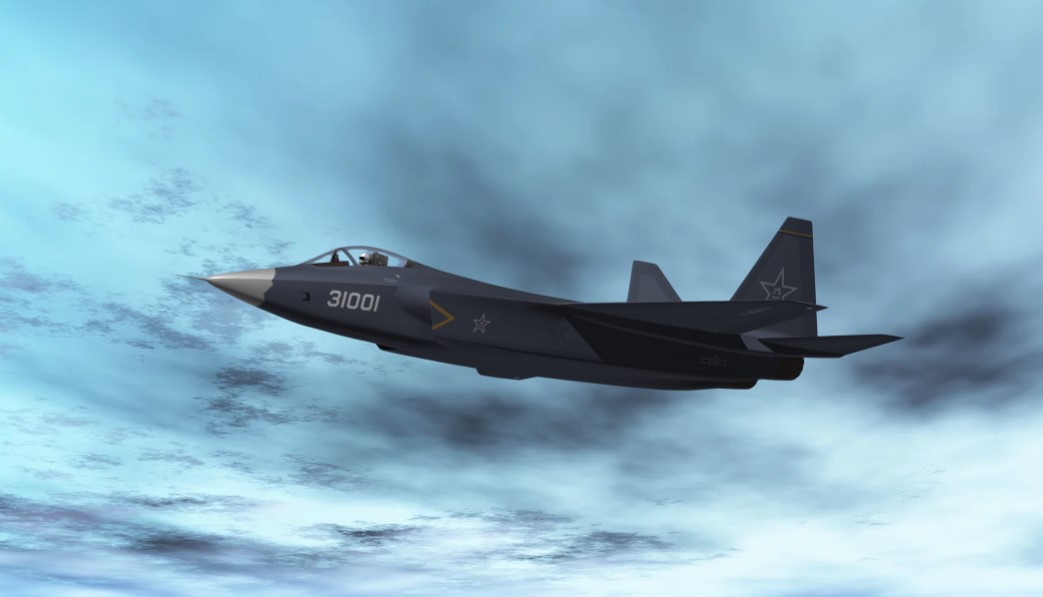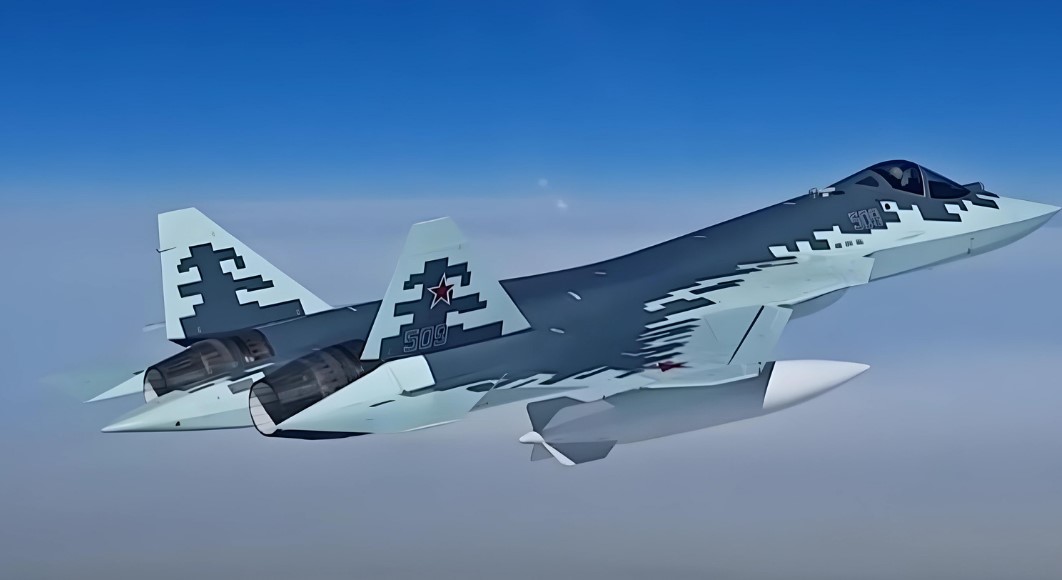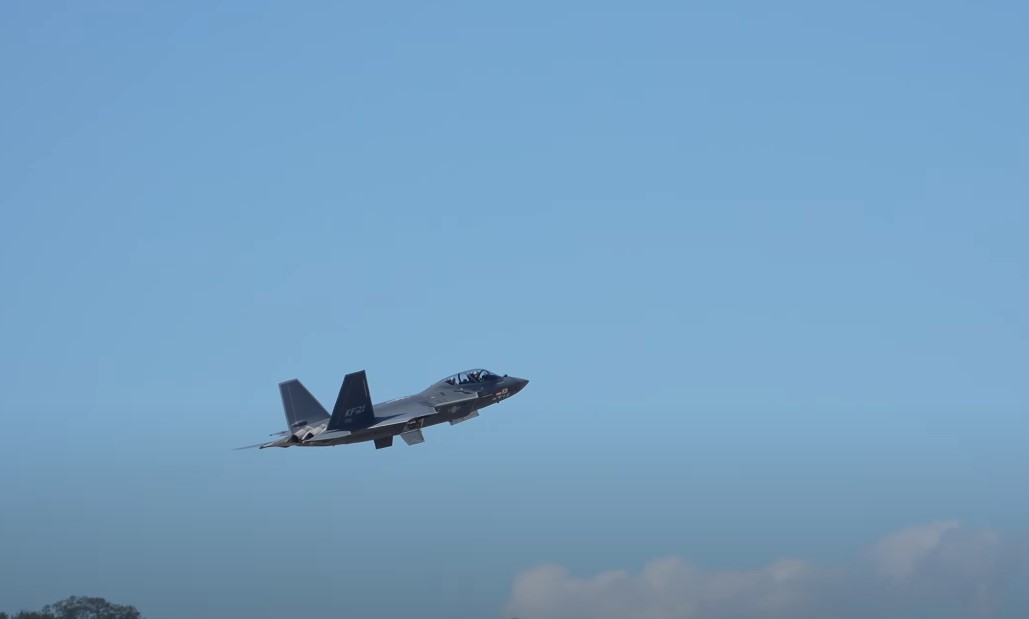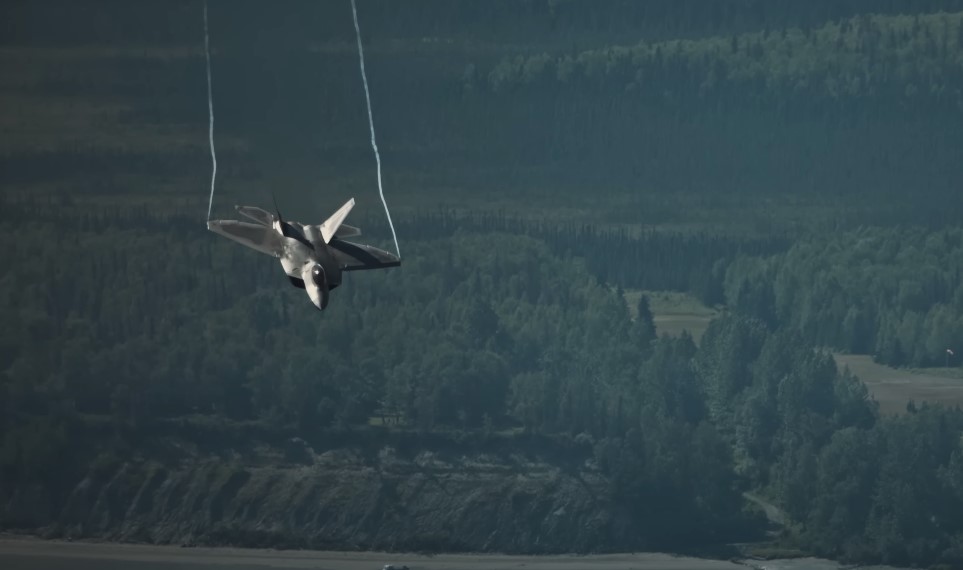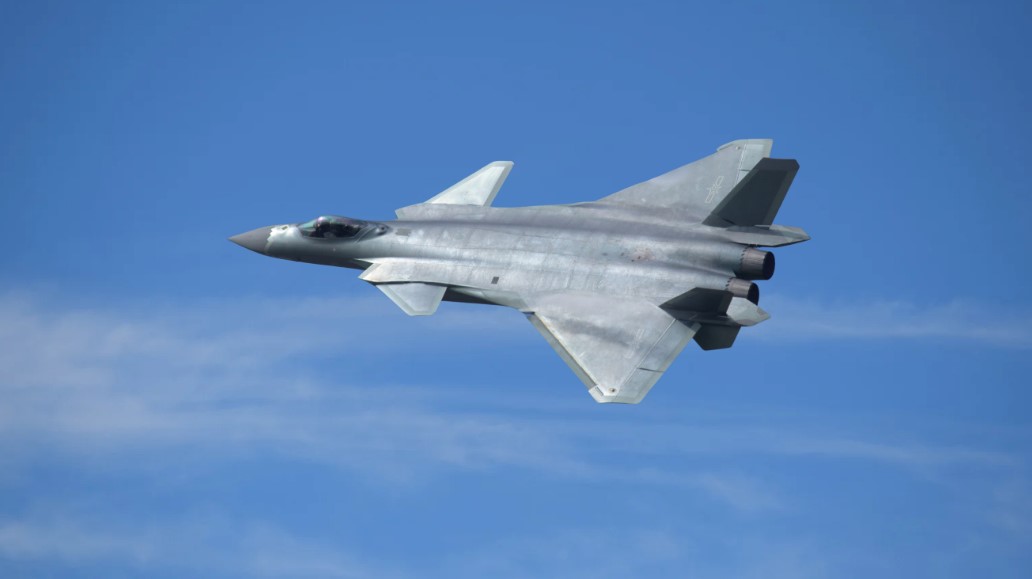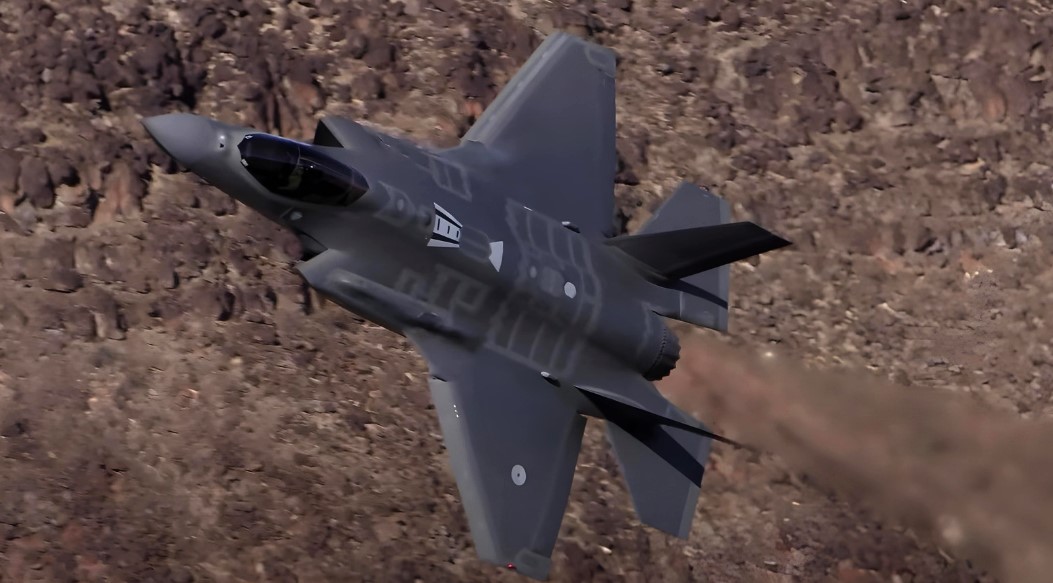As someone who is fascinated by military aviation, I’ve always been drawn to the world of fighter jets.
In my journey through the intricate details of military prowess, I’ve noticed that while many countries stick to older, budget-friendly models, the giants of global defense don’t hesitate to push the envelope, investing in the most cutting-edge technology available.
To me, the true measure of a fighter jet’s worth lies in its blend of raw power, cutting-edge technology, and the ability to adapt to a variety of roles. Whether it’s the roar of advanced engines, the stealthy silhouette slipping through radar nets, or the complex dance of data-linking systems that share vital battlefield information, each aspect fascinates me.
Some jets twist and turn with the grace of a dancer, thanks to thrust vectoring, while others play a game of hide and seek with the most sophisticated radars.
So, what makes a fighter jet stand out among the rest?
Key Takeaways
- Sukhoi Su-35S, Eurofighter Typhoon, Dassault Rafale, Boeing F-15EX Eagle II, Shenyang FC-31, Sukhoi Su-57, KAI KF-21, F-22 Raptor, Chengdu J-20, Lockheed F-35 Lightning II.
- Breakthroughs in stealth, radar, and engine technology.
- Designed for multiple combat roles, enhancing operational flexibility.
- International partnerships critical for technological progress.
- Focus on minimizing radar signature and maximizing maneuverability.
- High kill ratios and strategic deployment underline combat effectiveness.
10. The Sukhoi Su-35S: The Pinnacle of Russian Aerospace Engineering
The Sukhoi Su-35S stands as the apex of the Su-27 platform lineage, which includes notable aircraft such as the Su-30, Su-35, Su-37, and the Chinese Shenyang J-16 according to Air Force Technology.
These aircraft represent the 4.5 generation of fighter jets, each boasting a series of upgrades and variants that enhance their combat capabilities.
The Su-35S distinguishes itself as the most advanced iteration among them, thanks to its superior technological and structural enhancements. :
Key Features
- Origin and Role: A multi-role and air superiority fighter developed from the Soviet-era Su-27.
- Design Evolution: Features a modernized design with significant improvements in cockpit and weapons systems, emphasizing thrust-vectoring for maneuverability.
- Primary Users: Operated by the Russian Aerospace Forces and China’s People’s Liberation Army Air Force, with over 151 units produced according to The Diplomat.
- Maneuverability: Equipped with thrust-vectoring nozzles for superior agility, eliminating the need for canards present in previous models.
- Advanced Avionics: Utilizes the N035 Irbis-E radar, capable of tracking multiple targets over 400 km away.
- Versatile Armament: Capable of carrying a broad range of air-to-air and air-to-ground munitions, including long-range missiles and anti-ship cruise missiles.
- Powerful Engines: Powered by Saturn AL-41F1S engines, offering thrust-vectoring control for exceptional maneuverability and the ability to perform advanced aerial maneuvers.
- Operational Experience: Demonstrated combat effectiveness in various operations, notably in the Russian military intervention in Syria.
9. The Eurofighter Typhoon: Europes Premier Fighter Jet
The Eurofighter Typhoon stands as a testament to European collaboration, designed to embody the pinnacle of 4th generation fighter jet capabilities. Its adoption by some of the world’s most formidable air forces, including those of the United Kingdom, Germany, Italy, Qatar, and Saudi Arabia, underscores its global appeal and superior performance.
Key Features
- Type: Multi-role combat aircraft, capable of air superiority and ground attack missions.
- Generation: 4th generation, with advanced 4.5 generation capabilities in later tranches.
- Engines: Equipped with two Eurojet EJ200 afterburning turbofan engines, providing high thrust-to-weight ratios for exceptional speed and agility.
- Speed: Capable of reaching speeds up to Mach 2 (approximately 1,550 mph or 2,495 km/h) at altitude.
- Range: Combat radius of approximately 1,390 kilometers (863 miles) on air-to-air missions, extendable with external fuel tanks.
- Avionics: Features a highly advanced avionics suite, including the CAPTOR radar system and the future integration of the CAPTOR-E AESA (Active Electronically Scanned Array) radar.
- Armament: A versatile weapons platform capable of carrying air-to-air missiles (such as the AIM-120 AMRAAM, Meteor), air-to-ground munitions (Paveway IV, Storm Shadow), and an internal 27mm Mauser BK-27 cannon.
- Stealth Features: While not a stealth aircraft, it incorporates some low-observable technologies and design aspects to reduce its radar cross-section.
- Cockpit: Advanced glass cockpit with a wide-angle Head-Up Display (HUD), multifunctional LCD screens, and voice command capabilities.
- Maneuverability: Exceptional agility and maneuverability, enabled by its aerodynamic design and fly-by-wire control system, allowing for high G-force maneuvers.
- Operational Use: Extensively used in various international missions, including air policing, peacekeeping, and combat operations.
- Users: Operated by several countries across Europe and the Middle East, with significant orders from nations seeking a versatile and advanced multi-role fighter.
8. The Dassault Rafale: France’s Premier Multirole Fighter Jet
The Dassault Rafale stands as a testament to French innovation in military aviation, diverging from the Eurofighter Typhoon program in the mid-1980s to fulfill the specific requirements of the French Armed Forces as reported by BNN Breaking.
This aircraft distinguishes itself not only by its capabilities but also by its versatility, including a variant capable of aircraft carrier operations.
Key Highlights
- Multirole Capability: Designed to perform air supremacy, interdiction, reconnaissance, and airborne nuclear deterrent missions.
- Carrier Operations: The Rafale M variant is specifically engineered for deployment from aircraft carriers, featuring reinforced landing gear and a tailhook.
- Nuclear Armament: Certified to deliver air-launched nuclear weapons, highlighting its role in strategic deterrence.
- Advanced Avionics: Equipped with state-of-the-art avionics, including the RBE2 AA active electronically scanned array (AESA) radar and the SPECTRA electronic warfare system for superior situational awareness and self-protection.
- Engine Power: Powered by two Snecma M88 engines, providing high thrust and enabling supercruise capabilities in certain configurations according to Safran.
- Versatile Weapon Load: Capable of carrying a wide range of weaponry, from precision-guided munitions to long-range standoff missiles and a 30mm internal cannon.
- Stealth Features: While not a stealth aircraft, it incorporates design elements to reduce its radar cross-section and infrared signature.
- Spectral Signature Reduction: The Rafale’s SPECTRA system offers comprehensive threat detection and countermeasures, significantly reducing the aircraft’s susceptibility to detection and targeting as per Thales Group.
- Operational Flexibility: Demonstrated capability in a variety of combat scenarios, from air-to-air engagements to deep strike missions.
- International Adoption: Beyond France, Rafale has been selected by several countries worldwide, including Egypt, Qatar, India, and Greece, for its advanced capabilities and adaptability to different mission profiles.
7. The Boeing F-15EX Eagle II: Modern Evolution of Air Superiority
The Boeing F-15 Eagle, a pioneer among 4th generation fighter jets, marked its 52nd anniversary in 2024, a testament to its enduring legacy and combat prowess as reported by Boeing.
Despite its age, the F-15 remains an unmatched air combat platform, boasting an unparalleled record of over 100 air-to-air victories without a single loss in aerial combat.
This impressive track record is a result of continuous enhancements, incorporating cutting-edge technology across its variants to maintain its competitive edge.
The F-15EX Eagle II represents the zenith of this evolution. Developed by Boeing, this latest iteration is equipped with modern radar systems, updated avionics, and sophisticated weapons systems, among numerous other advancements. These updates ensure the F-15EX remains a formidable force in modern air warfare, ready to meet the challenges of contemporary and future battlefields.
Key Features
- Advanced Radar Systems: The F-15EX is outfitted with the latest radar technology, enhancing its detection and engagement capabilities.
- Updated Avionics: Incorporates state-of-the-art avionics for improved navigation, communication, and combat efficiency.
- Sophisticated Weapons Systems: Equipped to carry a wide array of advanced missiles and bombs, ensuring versatility in combat roles.
- Enhanced Performance: Features improvements in engine performance and fuel efficiency, extending its range and combat radius.
- Digital Backbone: The aircraft’s digital infrastructure supports rapid updates and integration of future technologies.
- Increased Payload: Capable of carrying more weapons than previous F-15 variants, allowing for a diverse array of mission profiles.
- Stealth Features: While not a stealth aircraft, it includes design elements to reduce its radar signature.
- Cockpit Upgrades: Features a modernized cockpit with improved human-machine interface, including large multi-function displays.
- Survivability Enhancements: Enhanced electronic warfare systems to detect and counter threats, increasing its survivability in contested environments.
6. The Shenyang FC-31 Gyrfalcon: Emerging Stealth Fighter from China
The Shenyang FC-31 Gyrfalcon, a project that has been in development for over a decade, is nearing operational status, marking a significant milestone in China’s military aviation advancements.
Initially introduced as a concept, the FC-31 is on the verge of becoming China’s latest carrier-based stealth fighter, showcasing the nation’s growing capabilities in producing advanced combat aircraft.
While many of its specifications remain under wraps, recent imagery and reports hint at a jet that has undergone substantial refinements, including redesigned engine housings and an updated canopy, among other enhancements.
Key Features
- Stealth Focus: Utilizes radar-absorbent materials and design for reduced detection.
- Carrier Operations: Optimized for the Chinese Navy’s carrier-based tasks.
- Engine Enhancements: Updated engines for better performance and stealth.
- Pilot Visibility: Improved canopy design for greater visibility and avionics.
- Advanced Avionics: Features cutting-edge, yet classified, systems.
- Weapons Storage: Internal bays for stealthy armament carriage.
- Electronic Warfare: Equipped for sensor and communication disruption.
- Maneuverability: Aerodynamic tweaks for superior flight performance.
- Export Potential: Marketed globally as a modern stealth fighter solution.
5. Sukhoi Su-57 Felon: Russia’s Foray into Stealth Technology
The Sukhoi Su-57 Felon represents Russia’s inaugural venture into stealth aircraft technology, marking a significant milestone in the country’s military aviation history.
Despite facing numerous challenges and delays that have impeded its development timeline, the Su-57 has gradually progressed towards operational status, albeit in limited numbers.
With plans for the integration of a new, more powerful engine and a series of other enhancements, the Su-57 is on the cusp of realizing its full potential as a formidable heavy fighter.
Key Features
- Stealth Capabilities: Designed with stealth in mind, the Su-57 incorporates radar-absorbent materials and an airframe design aimed at minimizing its radar cross-section.
- Advanced Propulsion: The aircraft is set to receive a new engine, expected to significantly boost its performance metrics, including speed, range, and efficiency.
- Low-Speed Maneuverability: Despite its classification as a heavy fighter, the Su-57 boasts exceptional maneuverability at low speeds, a critical advantage in close-quarters combat.
- Sophisticated Radar Systems: Equipped with advanced radar technology, the Su-57 can detect and engage enemy targets at long distances, enhancing its role as an air superiority fighter.
- Internal Weapons Bay: To preserve its stealth profile, the Su-57 features internal weapons bays capable of housing a wide array of munitions.
- Electronic Warfare Suite: The aircraft includes a comprehensive electronic warfare system, designed to disrupt enemy sensors and communications.
- Network-Centric Warfare Capabilities: The Su-57 is built to operate within a network-centric warfare environment, exchanging data with other assets to enhance situational awareness and combat effectiveness.
4. The KAI KF-21 Boramae: Bridging the Gap Between Generations
The KAI KF-21 Boramae, a product of South Korean innovation in collaboration with Indonesia, marks a pivotal advancement in the aerospace sector for both nations according to Defense News.
This fighter jet, blending stealth capabilities with advanced avionics and technologies inspired by the F-35, positions itself uniquely between the 4.5 and 5th-generation fighter classifications.
With its first successful flight in July 2022, the KF-21 is on a clear path toward revolutionizing air combat capabilities, with plans for operational deployment by 2026.
Key Features
- Stealth: Designed to reduce radar footprint.
- AESA Radar: Features advanced target detection.
- F-35 Influence: Incorporates similar high-tech solutions.
- Initial Flight: Maiden voyage in July 2022, with ongoing testing.
- Electronic Warfare: Enhanced system for improved defense.
- 5th-Generation Goal: Progressing towards full 5th-gen capabilities.
- Global Partnership: A South Korea-Indonesia defense collaboration.
3. The Lockheed Martin F-22 Raptor: Pioneering 5th Generation Air Superiority
The Lockheed Martin F-22 Raptor stands as a monumental achievement in aviation history, being the first 5th generation fighter jet to enter operational service according to Lockheed Martin.
Renowned for its stealth capabilities, advanced avionics, and superior performance in air-to-air combat, the F-22 has solidified its role as a cornerstone of the United States Air Force’s (USAF) air dominance.
Despite its inception over two decades ago, continuous upgrades have ensured the Raptor remains at the cutting edge of military aviation technology.
Key Features
- Stealth Technology: First fighter with comprehensive stealth, nearly undetectable by radar.
- Thrust-Vectoring: Pratt & Whitney F119-PW-100 engines allow unparalleled maneuverability.
- Weapon Systems: Equipped with AIM-120 AMRAAM and AIM-9 Sidewinder missiles for superior combat capability.
- Sensors: Advanced AN/APG-77 radar system for top-notch situational awareness.
- Exclusive Operation: Used solely by the USAF, emphasizing its elite status.
- Global Deployment: Proven in international missions, showcasing operational effectiveness.
- Continuous Upgrades: Modernization keeps it at the cutting edge of air combat technology.
- Performance: Sets the benchmark in speed, range, and combat radius for 5th generation fighters.
2. The Chengdu J-20: Mighty Chinese Dragon
Inaugurated into service in 2017, the Chengdu J-20 Mighty Dragon represents a monumental stride in the evolution of Chinese military aviation as its first 5th generation fighter jet.
Crafted to compete with top-tier fighters such as the F-22 and Su-57, the J-20 enhances the combat capabilities of the People’s Liberation Army Air Force (PLAAF) through its sophisticated avionics and unmatched performance. Despite lacking thrust-vectoring engine exhausts, which affects its agility compared to some rivals, the J-20’s stealth-focused design remains exceptionally advanced.
The specifics of the J-20’s design and capabilities are kept under wraps, but continuous improvements are being made to ensure it remains a formidable opponent in air combat.
Efforts are underway to develop new versions of the aircraft, including a dual-seater variant aimed at drone command and control.
Key Features:
- Introduction Year: 2017
- Generation: 5th
- Role: Stealth air superiority fighter
- Operators: People’s Liberation Army Air Force (PLAAF)
- Design: Heavy, stealth-focused for reduced radar signature
- Maneuverability: Less agile without thrust-vectoring engines
- Avionics: Advanced, with ongoing enhancements
- Variants: New versions in development, including a two-seater for drone control
- Engine: Testing new, more powerful engines
- Capabilities: Classified, with a focus on maintaining a competitive edge in air combat
1. Lockheed Martin F-35 Lightning II: A New Era in Fighter Technology
The Lockheed Martin F-35 Lightning II represents the zenith of the United States’ fifth-generation fighter aircraft innovation. Since its production commencement in 2006, the F-35 has set new standards in the realm of combat aviation, featuring unparalleled stealth capabilities, advanced sensor integration, superior data networking, and the most sophisticated radar system to date according to F35.
The aircraft’s design maximizes stealth and sensor capabilities, rendering it highly effective in beyond-visual-range engagements and capable in close-quarter dogfights. Its first participation in the Red Flag exercise in 2017 showcased its dominance, achieving a 20:1 kill ratio. This remarkable performance is largely attributed to its ability to detect and engage threats from any direction, making traditional tactical advantages obsolete.
The F-35 is available in three variants: the F-35A for conventional takeoff and landing, the F-35B equipped with vertical takeoff and landing capabilities, and the F-35C, a carrier variant for naval operations.
Despite initial setbacks and cost overruns that led to it becoming the most expensive weapons system globally, the F-35 has seen a decrease in price and resolution of earlier issues. This has bolstered its appeal internationally, resulting in a growing number of countries acquiring the F-35, solidifying its status as a significant export success.
Key Features:
- Introduction Year: Production started in 2006.
- Generation: Fifth-generation fighter aircraft.
- Stealth: Unmatched all-aspect stealth capabilities.
- Sensor Fusion: Advanced integration of sensors for superior situational awareness.
- Engine: Equipped with the world’s most powerful fighter engine.
- Radar: Features the most advanced radar system available.
- Augmented Reality Helmet: Provides pilots with unprecedented levels of situational awareness.
- Combat Performance: Demonstrated a 20:1 kill ratio during its first Red Flag exercise in 2017.
- Variants:
- F-35A: Conventional takeoff and landing variant.
- F-35B: Capable of vertical take-off and landing.
- F-35C: Carrier variant for naval operations.
- Operational History: Overcame initial developmental challenges to become a significant export success, with increasing global orders due to cost reductions and enhanced capabilities.
FAQ
Bottom Line
The realm of military aviation is marked by relentless innovation and technological advancement, with the world’s leading powers continuously pushing the boundaries of what’s possible.
From the raw power and agility of Russia’s Sukhoi Su-35S to the unmatched stealth and sensor capabilities of the Lockheed Martin F-35 Lightning II, each fighter jet brings a unique set of capabilities to the table.
Disclaimer
All information presented in this text is based on our own perspectives and experiences. The content is provided for informational purposes only and is a reflection of the personal views of the authors. It should not be taken as professional advice, nor should it be used as a basis for making significant decisions without consulting a qualified expert. We do not guarantee the accuracy or reliability of the information provided and shall not be held responsible for any inaccuracy, omissions, or inaccuracies. We highly recommend consulting with a qualified expert in the relevant field for personalized guidance or advice specific to your situation

